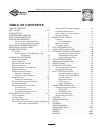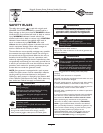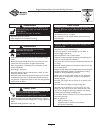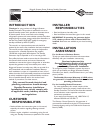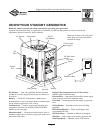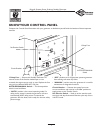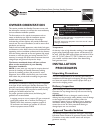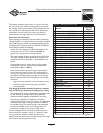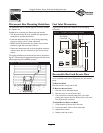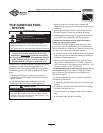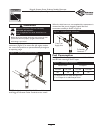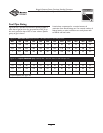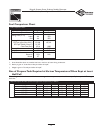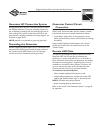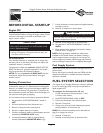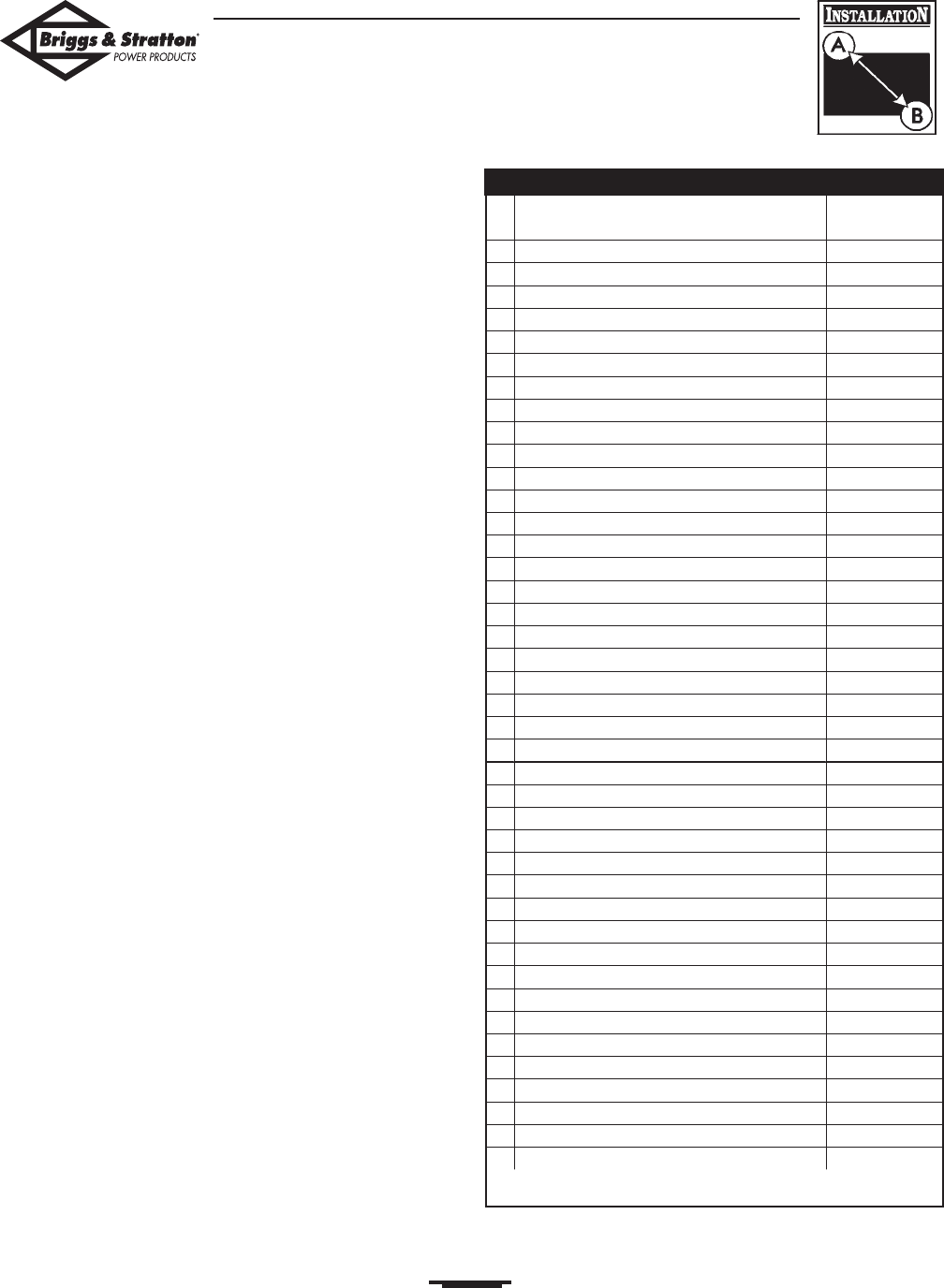
10
Briggs & Stratton Power Products Standby Generator
Installation, Start-Up and Owner’s Manual
The wattage reference guide shown in Figure 2 will assist
the owner with their decision-making process. It provides
the wattage used by many ordinary household devices. Use
it as a guide when selecting essential circuits. Review this
information with the owner and convey any technical
considerations that might affect the cost of installation.
Essential Circuit Selection
When selecting the essential circuits that will be switched to
“Standby Power,” it is important that the sum of the combined
circuit loads does not exceed the wattage/amperage capacity
of the generator.To help you with your selection of essential
circuits,please consider the following:
Add up the total wattage of all electrical devices to be
connected at one time.This total should NOT be
greater than the generator’s wattage capacity.
The rated wattage of lights can be taken from light bulbs.
The rated wattage of tools, appliances and motors can
usually be found on a data plate or decal affixed to the
device.
If the appliance, tool or motor does not give wattage,
multiply volts times the ampere rating to determine
watts (Volts x Amps = Watts).
Some electric motors (induction types) require about
three times more watts of power for starting than for
running.This surge lasts for only a few seconds. Be sure
you allow for this high starting wattage when selecting
electrical devices that will be energized by the Standby
Generator:
• Figure the watts required to start the largest motor.
• Add that to the total running watts of all other
connected loads.
This Briggs & Stratton Standby Generator complies
with the following “stationary standby power rating”:
The standby power rating is applicable for supplying power
for the duration of normal power interruption. NO
sustained overload capability is available for this rating.
This rating is applicable to installations served by a
reliable normal utility source.This rating is only applicable
to variable loads with an average load factor of 80% of
the standby rating.The standby rating is only applicable
for optional standby power where the generator set
serves as the backup to the normal utility source.
Use the “Wattage Reference Guide” provided and mark
those circuits you consider “critical” or “essential”. Make
sure you and your installer consider the generator’s
altitude above sea level and the ambient temperature range
when determining total generator load.
Device
Running
Watts
Air Conditioner (12,000 Btu)*
1700
Air Conditioner (24,000 Btu)*
3800
Air Conditioner (40,000 Btu)*
6000
Battery Charger (20 Amp)
500
Circular Saw (6-1/2")
800 to 1000
Clothes Dryer (Electric)*
5750
Clothes Dryer (Gas)*
700
Clothes Washer*
1150
Coffee Maker
1750
Compressor (1 HP)*
2000
Compressor (1/2 HP)*
1400
Compressor (3/4 HP)*
1800
Curling Iron
700
Dehumidifier*
650
Electric Blanket
400
Electric Range (per element)
1500
Electric Skillet
1250
Freezer*
700
Furnace Fan (3/5 HP)*
875
Garage Door Opener*
500 to 750
Hair Dryer
1200
Hand Drill
250 to 1100
Iron
1200
Jet Pump*
800
Light Bulb
100
Microwave Oven
700 to 1000
Milk Cooler*
1100
Oil Burner on Furnace
300
Oil Fired Space Heater (140,000 Btu)
400
Oil Fired Space Heater (30,000 Btu)
150
Oil Fired Space Heater (85,000 Btu)
225
Radio
50 to 200
Refrigerator
700
Slow Cooker
200
Submersible Pump (1 HP)*
2000
Submersible Pump (1/2 HP)*
1500
Submersible Pump (1-1/2 HP)*
2800
Sump Pump*
800 to 1050
Table Saw (10")*
1750 to 2000
Television
200 to 500
Toaster
1000 to 1650
Figure 2 — Wattage Reference Guide
*Allow three (3) times listed watts for starting device



